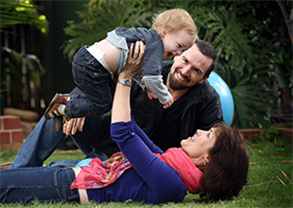Search
Research
Seasonal trivalent influenza vaccination during pregnancy and the incidence of stillbirth: Population-based retrospective cohort studyAlthough antenatal influenza vaccination is an important public health intervention for preventing serious infection in pregnant women and newborns, reported...
Research
Progress toward a global Group A streptococcal vaccineThe desire for an effective vaccine arises from the large burden of disease caused by the bacterium, particularly rheumatic fever and rheumatic heart disease.
Research
Group A streptococcal vaccines: Paving a path for accelerated developmentVaccine prevention of GAS infections and their immunological complications has been a goal of researchers for decades.

News & Events
The good oil on immunisationAs a new parent or parent-to-be, you will be faced with many important decisions about your health and the health of your child, including immunisation.
News & Events
National Indigenous Immunisation Research WorkshopYou are invited to register to attend the National Indigenous Immunisation Research Workshop 2013: lessons learnt and future directions Workshop.
News & Events
The science of immunisation: Questions and answersCommon myths about immunisation have been laid to rest in a new booklet written by top immunologists and published by the Australian Academy of Science.
Research
Influenza disease and vaccination in children in AustraliaOver the past decade, multiple initiatives have been implemented to strengthen influenza vaccination programs in Australia, with an increasing focus on children. In this article, we review these changes, the events that prompted them, and how they have influenced influenza vaccine uptake in Australia.
Research
A multi-country investigation of influenza vaccine coverage in pregnant individuals, 2010–2016Many countries recommend influenza vaccination during pregnancy. Despite this recommendation, influenza vaccine among pregnant individuals remains under-utilized and uptake varies by country. Factors associated with influenza vaccine uptake during pregnancy may also vary across countries.
Research
Weighing the Risks of Perimyocarditis With the Benefits of SARS-CoV-2 mRNA Vaccination in AdolescentsChristopher Blyth MBBS (Hons) DCH FRACP FRCPA PhD Centre Head, Wesfarmers Centre of Vaccines and Infectious Diseases; Co-Head, Infectious Diseases
Research
Meningococcal serotype W septic arthritis: Case series in childrenThe epidemiology of invasive meningococcal disease has changed over the last decade and there has been an increase in cases caused by serogroup W135, particularly in Indigenous children. Extra‐meningeal and atypical presentations are associated with serogroup W and may delay diagnosis and therefore appropriate treatment. Public and clinician awareness are essential in facilitating effective new vaccine schedule implementation.
